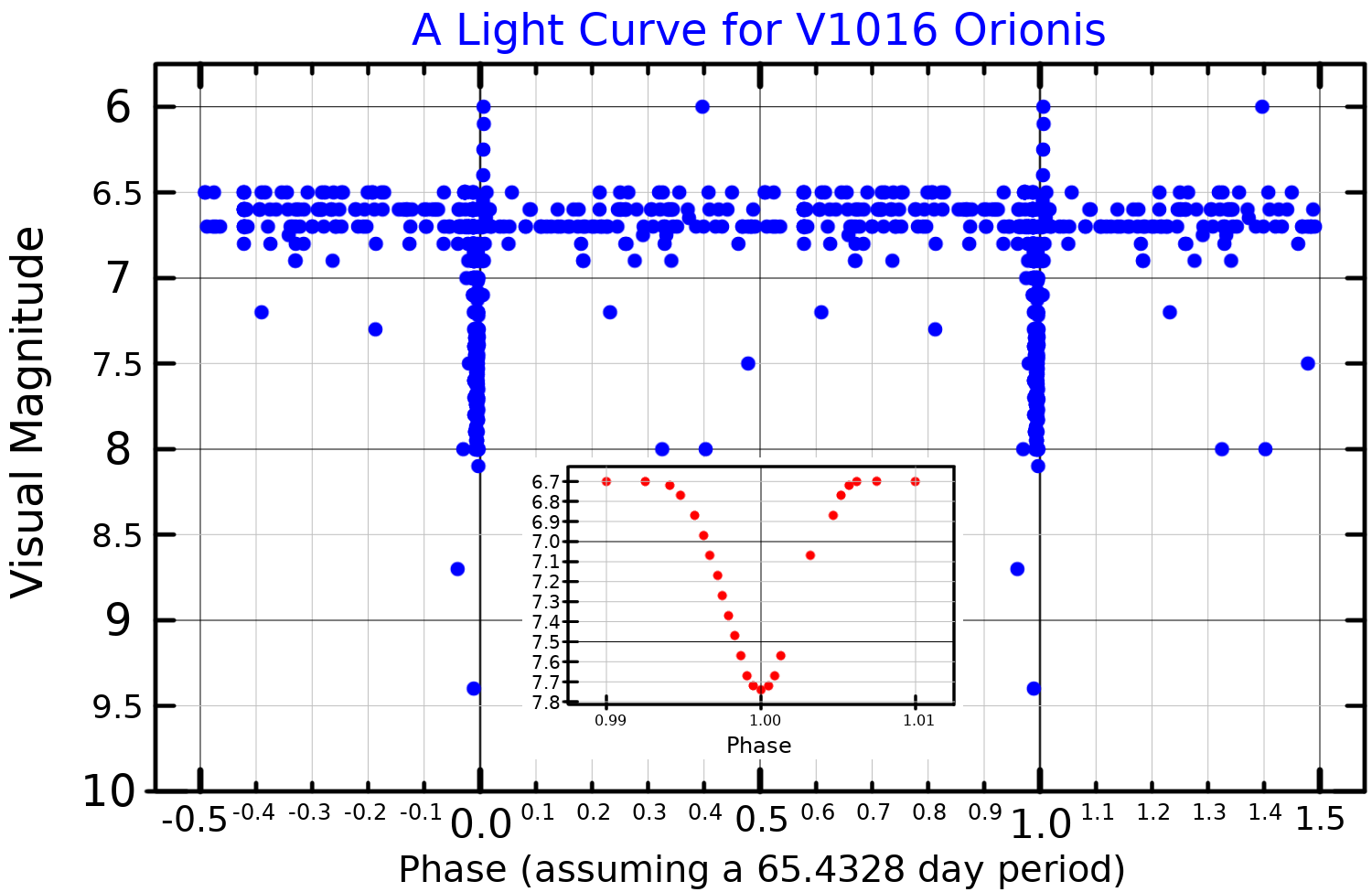Theta1 Orionis A on:
[Wikipedia]
[Google]
[Amazon]
Theta1 Orionis A (θ1 Ori A) is a variable trinary star in the
 θ1 Orionis A varies in brightness, showing dips from
θ1 Orionis A varies in brightness, showing dips from
constellation
A constellation is an area on the celestial sphere in which a group of visible stars forms Asterism (astronomy), a perceived pattern or outline, typically representing an animal, mythological subject, or inanimate object.
The first constellati ...
Orion. Its apparent magnitude
Apparent magnitude () is a measure of the Irradiance, brightness of a star, astronomical object or other celestial objects like artificial satellites. Its value depends on its intrinsic luminosity, its distance, and any extinction (astronomy), ...
range is 6.72 to 7.65 with a period of 65.432 days. It is one of the main stars in The Trapezium in Orion, along with B, C, and D, as well as the fainter E.
Variability
 θ1 Orionis A varies in brightness, showing dips from
θ1 Orionis A varies in brightness, showing dips from magnitude
Magnitude may refer to:
Mathematics
*Euclidean vector, a quantity defined by both its magnitude and its direction
*Magnitude (mathematics), the relative size of an object
*Norm (mathematics), a term for the size or length of a vector
*Order of ...
6.72 to 7.65 every 65.432 days. These are caused by eclipses of a close binary pair. θ1 Orionis A has been assigned the variable star designation
In astronomy, a variable-star designation is a unique identifier given to variable stars. It extends the Bayer designation format, with an identifying label (as described below) preceding the Latin genitive of the name of the constellation in whic ...
V1016 Orionis.
System
θ1 Orionis A is a star system with three known members. Components A1 and A2 are separated by around 0.2 ", while A1 is itself a spectroscopic binary with two stars separated by about 1 au. θ1 Orionis A1 is aneclipsing binary
A binary star or binary star system is a Star system, system of two stars that are gravity, gravitationally bound to and in orbit around each other. Binary stars in the night sky that are seen as a single object to the naked eye are often resolved ...
but the secondary is not detected in the spectrum and is far less luminous than the primary. The secondary has been proposed to be a T Tauri star
T Tauri stars (TTS) are a class of variable stars that are less than about ten million years old. This class is named after the prototype, T Tauri, a young star in the Taurus Molecular Cloud, Taurus star-forming region. They are found near mo ...
, possibly of spectral class A. The orbit is not well-defined but appears to be eccentric.
θ1 Orionis A2 is approximately one magnitude fainter than A1 and 0.2" away. This corresponds to a projected separation of 90 AU. The relative motion of the two stars has been measured and they are slowly getting closer together but it has not been possible to derive an orbit. The relative motion of the two stars could simply be a straight line, but it is calculated that they are gravitationally bound.
References
External links
* * {{DEFAULTSORT:Theta1 Orionis A Orion (constellation) B-type main-sequence stars Orionis, Theta1 A Orionis, 41 A Algol variables Triple star systems 026220 037020 1893 Durchmusterung objects Orionis, V1016